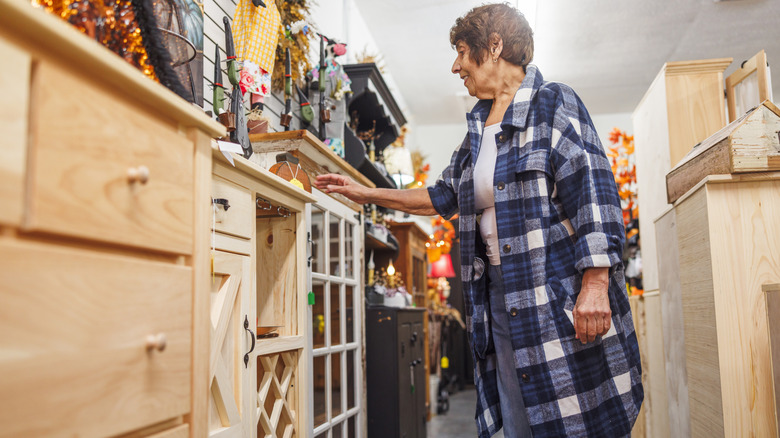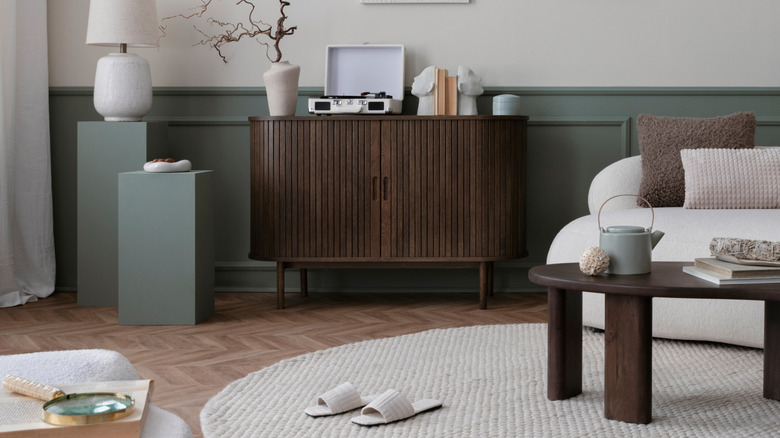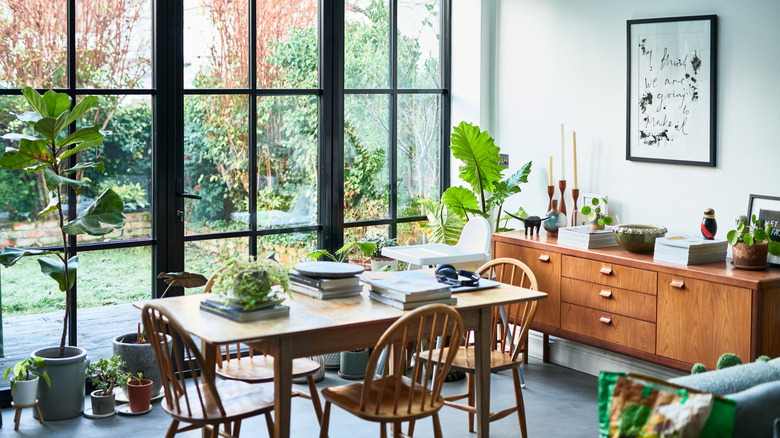The Real Difference Between A Sideboard And A Buffet (And Which Is Right For You)
When furnishing a home, understanding the specific names and purposes of pieces of furniture can be confusing, especially when it comes to items that look similar. Are you puzzled by the difference between a sideboard and a buffet? You're not alone. Many people use these terms interchangeably, sometimes leading to confusion when trying to describe or shop for the perfect piece for their space. The real difference between these two isn't about a drastically different design, but a simpler, often overlooked detail: where the piece lives in your home.
These furniture pieces are fundamentally the same in their basic structure — both are fairly low, elongated storage units that have a flat surface on top for display or serving. The names change depending on their setting. When you have one of these units in your dining room, it's traditionally known as a buffet. Move that same item to your living room, and it becomes a sideboard.
While their purpose of providing storage is the same, their designated room influences specific characteristics, proportions, and overall aesthetic details that should be considered. Understanding this important distinction can help you choose a furniture piece that's genuinely right for your space. One that looks good but also serves its purpose, whether that's entertaining guests or simply keeping essential items neatly tucked away.
The ins and outs of a sideboard
When one of these elongated storage pieces finds its home in a living area, a wide hallway, or even a bedroom, it assumes the title of sideboard. Unlike their dining room counterparts, sideboards in these less formal settings are made to blend seamlessly with the existing decor, often adding to the room's display and storage space. One common characteristic of sideboards is their profile, which typically includes stubby, relatively short legs, grounding the piece, and giving it a substantial presence without being too tall. The lower height often makes sense to place it beneath windows or against walls where a taller item might feel out of proportion.
The flat top of a sideboard is perfect for showcasing decorative items, framed photographs, or a collection of books. Below this display space, sideboards have enclosed storage, which might include a combination of drawers and cabinets. This hidden storage is versatile, making it ideal for stashing away remote controls, media accessories, board games, or extra throw blankets. By providing a dedicated spot for these everyday items, sideboards help to keep your living space tidy and organized while maximizing your home's storage potential.
The purpose of a buffet
When the same type of furniture is placed in a dining room, its designation shifts to buffet. Here, its role is distinct and purposeful, primarily serving as a support piece for dining and entertaining. Buffets are designed with meal service in mind, often becoming a stylish accessory of the dining area while freeing up space on the main dining table. While buffets are perfect for serving food, holding platters, or displaying a centerpiece during gatherings, some buffets can also have an upper hutch. This hutch increases vertical storage and display space, ideal for showcasing decorative items, fine china, and stemware, while adding to the aesthetic of the dining room.
Buffets typically have taller legs compared to sideboards. This makes it much more comfortable for people to access items while standing, which is helpful when guests are helping themselves to food or drinks. The internal storage of a buffet is designed to house all types of dining essentials. This often includes dedicated compartments for dinnerware, serving bowls, glassware, and table linens, making sure everything needed for a meal is within easy reach.


